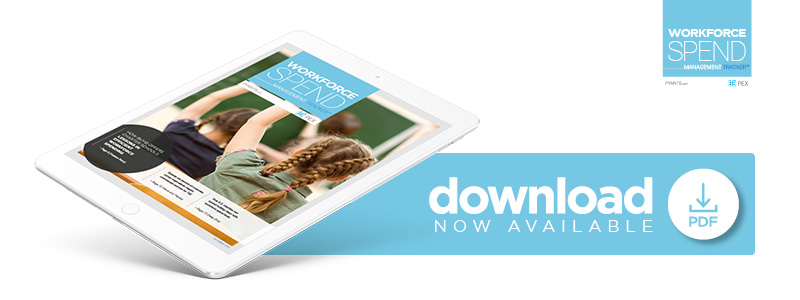Deep Dive: Spend Solutions To Help Charitable Organizations Spread Cheer

During the holiday season, nonprofit and religious organizations step up their fundraising efforts for charitable causes. These groups must demonstrate a high level of accountability, however, and workforce spend solutions can help them track spending and remove the friction from waiting for reimbursements. The following Deep Dive outlines how these groups can use workforce spend tools to track field-based spending and assure donors that they are investing in financially sound organizations.
 The holiday season is in full swing, and many people are reconnecting with their families and friends or scrambling to find the perfect gifts.
The holiday season is in full swing, and many people are reconnecting with their families and friends or scrambling to find the perfect gifts.
However, the “season of giving” also gives nonprofit and religious organizations — which often help many communities and causes — a chance to raise money and awareness. For instance, they can offer aid to the impoverished, relief to disaster-torn areas, and assistance for education and artistic endeavors.
Recent data shows that these organizations raised an impressive amount of funding last year. As outlined in the “Giving USA 2018” report, charities in the U.S. raised roughly $410 billion — 5 percent more than the previous year’s total. This figure includes donations from individuals, foundations and corporations, along with other entities.
A strong 2018 economy indicates that nonprofits could see yet another year of solid fundraising. Yet, as these organizations demonstrate their fundraising strengths, they might also consider turning to spend management solutions to help record how their money is being spent.
While $410 billion is an impressive sum, nonprofit and religious organizations process these amounts differently than for-profit companies do. Donated funds are typically invested into a group’s charitable programs, research or services, and many groups spend a share of their donations on operational costs, which include staff and supplies.
Transparency is a necessity for charitable organizations. Donors want to understand where their money is going, and groups must be able to demonstrate that they are responsibly handling funds. The following Deep Dive looks at nonprofit organizations’ regular expenses, and examines how workforce spend solutions could help them remain accountable and financially efficient, while still fulfilling their humanitarian efforts.
The Business Of Nonprofit Business
Religious and nonprofit organizations’ missions differ from those of for-profit businesses, but they face many of the same expenses. Like for-profit businesses, these organizations must pay their staff and executives, as well as provide benefits such as healthcare. They must also pay for utilities, such as telecommunications, rent, heat and electricity.
Unlike for-profit companies, however, nonprofit organizations do not follow a revenue-generating model that helps them collect money for these expenses. Instead, these organizations must often use a share of their donations to cover costs.
To raise money and awareness for their efforts, many organizations hold public events. These events, though, often require hiring temporary staff, as well as vehicle and facility rentals, and they can incur their own charges.
Some organizations have turned to business credit cards to help cover these expenses, as they can prevent staff or volunteers from using their own money to make purchases on behalf of organizations. Business card funds are withdrawn immediately from the organization’s account and are reported to accountants.
Business credit cards help guarantee that an organization’s funds are being spent appropriately. Instead of reviewing receipts or expense reports, financial administrators can review spending patterns online to ensure that it stays within budget and that staff members are only using cards for approved purchases.
Nonprofit and religious organizations’ employees could benefit by adopting smarter workforce spend tools as well, which would also prevent workers or volunteers from using their own money to pay for charitable products. In addition, these tools can also spare the wait for reimbursements and checks to be delivered — a process that can take several days or weeks.
Organizations can bolster their recruitment efforts by helping workers sidestep financial costs. Workers who aren’t required to incur financial cost — or wait to be repaid — are more likely to keep working with the organization.
What’s more, additional complications can arise when workers use their own payment cards to cover organizations’ expenses. For instance, some cards allow cardholders to receive points for purchases. Some nonprofit groups and religious organizations, however, might not approve of cardholders benefiting personally from purchases made on behalf of the group. Many of these potential conflicts can be avoided if business cards are used.
Rise Of Smarter Spend Solutions For Charitable Causes
In the past, many nonprofit and religious organizations addressed field-based expenses and out-of-pocket purchases through traditional spend solutions. However, the rise of smarter payment solutions could prompt some organizations to add new tools to their arsenal.
Some organizations have relied on petty cash to handle unexpected expenses. Yet, such systems require a money manager to be available to give staff and volunteers cash. Cash could also be stolen, especially if it’s stored at a field-based event or a region hit by a disaster.
Corporate cards can give executives greater control over their expenses. They can eliminate lengthy wait times for reimbursements and provide transparency into spending, while also giving executives real-time control over how, when and where funds are spent. Cards can be managed via mobile apps and deactivated if administrators suspect misuse.
As nonprofit and religious organizations pursue their charitable efforts, they will need to ensure that funds are tracked at all times. Nonprofit organizations may be in the charity business, but they can’t afford to lose track of their funds. They must show donors that they’re using their funds for the stated charitable missions. The right workforce spend tools can help these organizations track their funds, while keeping staff and volunteers happy and engaged.
During the season of giving, workforce spend tools can go a long way toward keeping these organizations transparent and effective as they make the world a better place.
